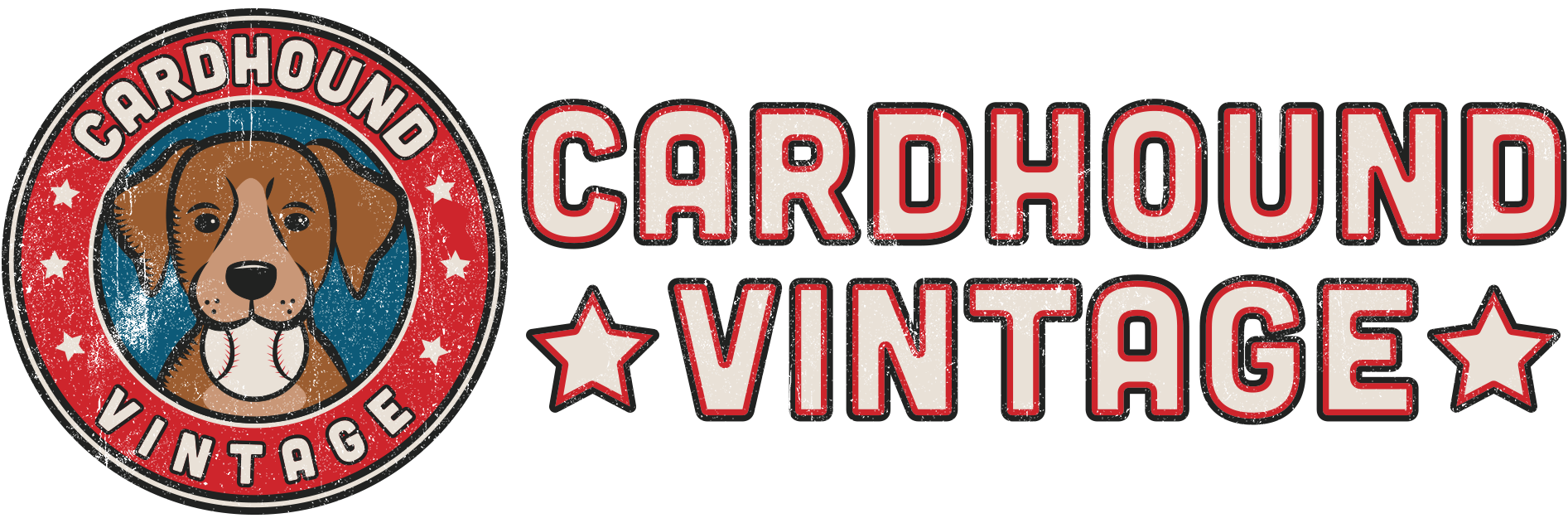I posed a related question to the last group of experts we had, very helpful indeed. I was a kid collector from 1969 to about 1976 when the teen years hit. Kids don't want my cards so I have begun piecing out cards. Its a ton of work but I do have the time. My primary sources for selling are Marketplace FB groups and on occasion eBay. Like most, I have tons of photos,etc. Sales success is all over the place. So, here is a shotgun set of Qs that may have no right answer but curious to get expert advice:
- Is there a more optimal platform to sell, or is it more how you market?
- I have primarily raw cards as I don't want to take the $15-18 hit to sell, do you have a recommendation on when it makes sense to grade
- Is there a year in which you see interest falling off for collectors? For example, it feels to me like 1971-72 still get a lot of play but after that tends to tale off
- I have many complete sets, hand built, recommendations on when it makes sense to break it and sell vs. keep in tact?
I guess, in a nut shell, I am looking for advice in getting the most out of card sales without an e-store or large presence other than within FB groups. Gotta get these sold and spend the money so the kids don't get it!! Thanks guys!
Hey Keith, so to answer question 1: there’s plenty of good platforms to successfully move vintage cards. eBay is great for singles in my opinion and I think using socials to move cards is super helpful. Twitter, Facebook and Instagram all have large bases of vintage collectors always looking to buy.
when it comes to grading with the intent to sell, I always tell people try to make sure your cards are worth at least $45-$50 a piece or else it’s a lot of work and money spent for very little return. eBay, 130point and card ladder are incredibly helpful with looking for the price range of certain cards. If I see any real falloff in vintage I’d say maybe after 1975. Brett and Yount RC’s and it’s a popular set. I don’t really view any set after 1975 being really memorable or anything. But then again, it’s hard to say because there will still always be people that collect late 70’s and 1980’s, even if at a much smaller clip. And lastly, in terms of your full sets, if you’re trying to sell I’d almost always recommend selling as a complete set. It’s a much easier and smoother process for you unless you don’t mind a lot of tedious work. But breaking down sets and selling can be time consuming and not as fruitful.
@cardswithastory Thank you very much for the guidance. I will definitely expand my research to include these other sources as well. Totally agree with you on 1975 cutoff, at least from group activity and price differences. Much appreciate your taking the time to help me on this.
Good Afternoon Keith,
Thanks for your question. For a large grouping of cards like that something like ComC could be a good solution for you to not incur a lot of fees and they would store and ship that cards for you as well as it pertains to raw cards. Greg Morris is also great for raw cards and if you consign a larger amount with them (I believe 5K value min) I think their commission structure is quite reasonable vs. selling individual selling on eBay.
Keith, in my opinion whether or not grading makes sense is almost a card by card calculation. What is the card worth raw? What is the card worth in its likely grade? If the difference between those two numbers is just 20 bucks then no, it doesn't make sense. If it's $40 or more, sure. Sometimes you gamble on it just a bit if a card is between grades and the higher grade will get you a big bump in value. This takes a really good understanding of condition / grading of course. I have noticed though that people seem to overpay often for raw cards. So if I'm on the fence about grading I usually don't. Most raw cards sell just fine I think people grade way too many cards in general, especially modern.
Hey Keith!
There is certainly no one-size-fits-all approach, so I think the best place to start is "shotgunning" and seeing what works best for you in terms of level of effort and the rewards you see. I think the important thing to remember is that no matter the platform, it takes time build trust and a bit of a following.
If your goal is to just sell the cards you have, I often find working with consignors to be a better option (allowing them to utilize their following and sometimes favorable fee structure) than trying to find the buyer myself. For example, if I have a modern card worth over $1000, I'll often just consign it to an eBay consigner with because many of them offer 92%-95% payouts. That's better than I'd get if I sold it myself on eBay, and most of my customer base looks to me for vintage cards so I often consign cards like that.
As for grading, I feel like selling online will always be easier for graded cards because the grading company serves as a proxy for folks when they can't hold the card and insepct it themselves. As you said, though, not all cards are really worth the hit. For my personal collection, I'm not grading a card unless it's worth more than $500, but if I'm selling, that bar is a lot lower (somewhere in the $150 range, depending on the card). I find that the cost of grading cards from this range and higher is usually made up for by the confidence online buyers have in the card.
As for the years of popularity and the complete sets, I find that the 1975 year as a cutoff, as well, although I view it as an exception. I view 1972 (where the high-series makes set building difficult) is the cut-off, with the '73 Schmidt being the main draw there and the '75 design and popular rookies making it an exception. That being said, if you've got hand-coallated sets from 1975 and older, I'd be happy to make an offer on them, even without having cards graded. 🙂
I will say, though, the best way to maximize the value you get for a set is to piece it out card-by-card, but there is a trade-off with your time and effort. It may take dozens of hours, a hundred transactions, and a long time to sell through a complete 1972 Topps set, for example - is that worth the extra money you squeeze out of the set? I think that's just a personal question where the answer will be different for everyone.
-Burl





